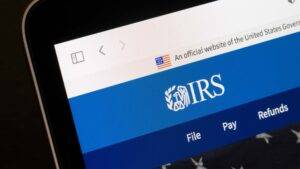
- |
- TaxByte
The IRS issued Notice 2026-3 on December 22nd, waiving estimated tax penalties that would have
5 min read
SHOP THE WINTER SALE – Get deals across the digital catalog, conferences, credit packages, and more.

When the House passed its version of the One Big Beautiful Bill Act in May, there was buzz about what seemed like the most significant Health Savings Account expansion in nearly two decades. The House version promised doubled contribution limits for lower-income earners, HSA eligibility for Medicare Part A enrollees, and even HSA-eligible gym memberships. By the time President Trump signed the final bill on July 4, most of those headline-grabbing provisions had vanished.
While the final OBBBA fell short of revolutionary HSA reform, it did deliver three substantive changes that will expand access and flexibility for many Americans.
Effective January 1, 2026, all Bronze and Catastrophic plans offered on ACA Exchanges will be considered HSA-compatible high-deductible health plans, regardless of whether they meet traditional HDHP requirements. This change addresses a long-standing quirk in the system where many Bronze plans currently do not qualify as HDHPs because they provide pre-deductible coverage of non-preventive services, and many Catastrophic plans do not qualify because their structure does not conform to the maximum permitted out-of-pocket limits.
This opens HSA eligibility to a potentially significant population of ACA marketplace enrollees who previously couldn’t access these tax-advantaged accounts. The change will be particularly relevant for clients navigating the ACA subsidy cliff or those using Individual Coverage Health Reimbursement Arrangements (ICHRAs).
Starting January 1, 2026, direct primary care (DPC) arrangements costing up to $150 monthly for individuals ($300 for families) will no longer disqualify participants from HSA eligibility, and these fees will qualify as HSA-eligible expenses. This resolves a compliance headache that has plagued the growing DPC industry, where monthly fees typically cover services like office visits for acute illnesses or chronic condition management—services that an HDHP can cover only after the deductible is met.
The change represents a win for clients seeking more affordable primary care options. DPC arrangements under this provision are prohibited from providing procedures requiring general anesthesia, prescription drugs other than vaccines, and laboratory services not typically administered in an ambulatory primary care setting.
Perhaps the most relevant change for practitioners is the permanent extension of telehealth relief for HDHPs, retroactively effective for plan years beginning after December 31, 2024. This makes permanent what had been a temporary COVID-era provision allowing first-dollar telehealth coverage without jeopardizing HSA eligibility.
The retroactive nature of this provision creates an immediate action item for employers with 2025 HDHPs that have been charging employees for telehealth services. Employers with telehealth services may decide to take advantage of this retroactive change and reimburse employees if they paid for telehealth services that can now be provided free of charge retroactively to January 1, 2025.
The OBBBA’s HSA changes, while more limited than originally proposed, still create several planning opportunities and compliance considerations for the upcoming year.
Client Profile: Sarah, age 45 filing single, earning $75,000 annually (above the 400% FPL threshold for ACA premium tax credits in 2026).
Current Situation (2025):
New Opportunity (2026):
Total Annual Benefit:
Note: The new law is particularly attractive to a client who is spending $4,300 a year on medical with no tax benefit.
The OBBBA’s HSA changes, while more limited than originally proposed, require proactive client outreach about new opportunities and compliance requirements for the upcoming year.
Practitioners should send targeted communications to clients currently enrolled in Bronze or Catastrophic ACA plans, as 2026 represents a new opportunity for these individuals to access HSA benefits. Since tax professionals may not know which clients fall into these categories, broad client letters or emails during the 2025 open enrollment period will help ensure affected clients understand the tax advantages becoming available January 1, 2026.
The retroactive telehealth provision requires immediate client notification regarding 2025 HDHPs. Client letters should inform individuals that they may now be eligible for reimbursement of telehealth services previously paid out-of-pocket, and should encourage clients to review their 2025 healthcare expenses with this new provision in mind.






Subscribe to our news, analysis, and updates to receive 10% off your first purchase of an on-demand digital CPE course.